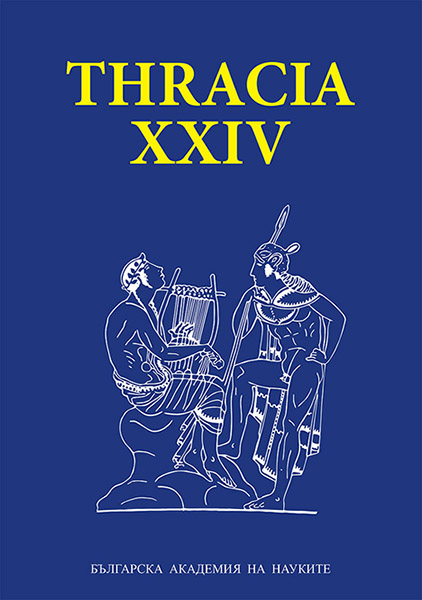Thracia Pontica / Тракия Понтика – 40 години по-късно
Thracia Pontica – 40 Years Later
Author(s): Kalin PorozhanovSubject(s): History, Archaeology, History of ideas, Local History / Microhistory, Ancient World, Recent History (1900 till today), Special Historiographies:, Post-War period (1950 - 1989), Transformation Period (1990 - 2010), Present Times (2010 - today)
Published by: Институт за балканистика с Център по тракология - Българска академия на науките
Keywords: Thracia Pontica; Mycenaean Thrace; Prof. Alexander Fol; the Thracian coasts; the Greek apoikiai
Summary/Abstract: The Thracia Pontica range of issues was perceived and named by Professor Alexander Fol in the 1970s as a resut of the complex expeditions Apollonia – Strandzha and Mesambria – Haemus, organised by the Institute of Thracology of the Bulgarian Academy of Sciences. During subsequent decades, the following important results were obtained. A national Centre of Underwater Archaeology was established with seat in the town of Sozopol (1978). Eight international symposia Thracia Pontica have been organised, as well as annual national and international expeditions. The view on the Thracian maritime culture along the coasts of the Aegean Sea, the Sea of Marmara and the Black Sea as an integral part of the history and culture of the Eastern Mediterranean is substantiated. Thracia Pontica constitutes part of the issues connected with Mycenaean Thrace (mid-second – mid-first millennium BC) because the Mycenaean religious, political and cultural models penetrated from the south to the north by sea. The Thracia Pontica range of issues comprises also the Thracians from Northwestern Asia Minor and its coastal areas, including the Aegean islands Thasos, Samothrace, Imbros, Lemnos and Naxos. The settling and the development of the Greek apoikiai along the Thracian coasts proved to be a process in which the two sides – the Thracian ethnos-related and the Greek polis-related sides – were mutually complementary and they interacted, playing hence the role of contact zones. The Summer University Strandzha Mountain and Its Role for the East–West Transfer of Civilisations was created on Alexander Fol’s initiative in 2002 and it functioned until 2015. Between 2009 and 2018, the Neophyte Rilski Southwestern University in Blagoevgrad implementeted research projects every year, connected with the range of Thracia Pontica issues along the Black Sea, Sea of Marmara and Aegean coasts.
Journal: Thracia
- Issue Year: 2019
- Issue No: 24
- Page Range: 86-103
- Page Count: 18
- Language: English, Bulgarian
- Content File-PDF

